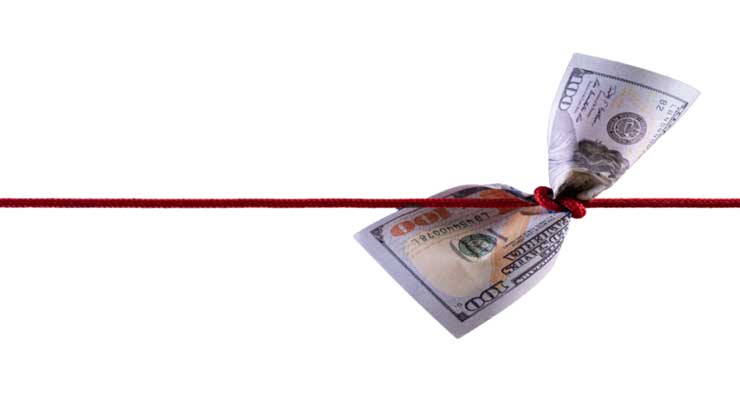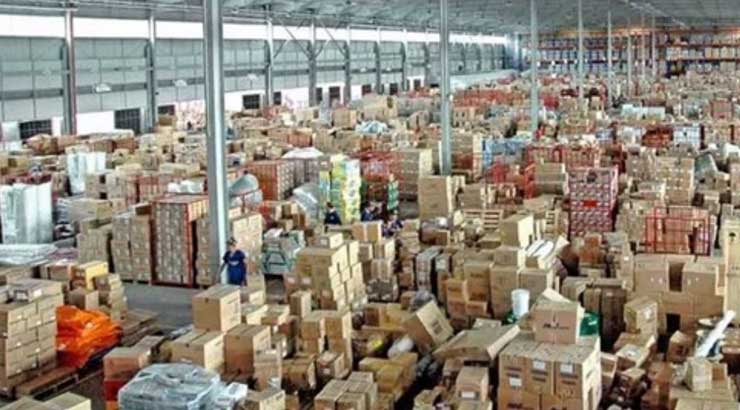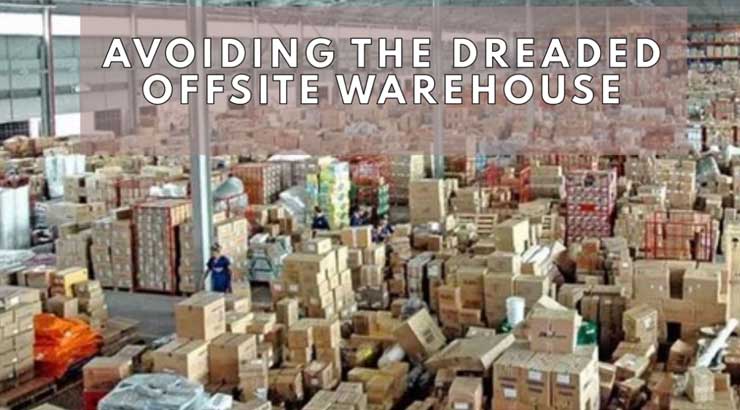Practices – Stock
Cycle Counting
We implement cycle counting to maintain accurate inventory records through regular, systematic counts. By consistently verifying inventory levels and quickly addressing discrepancies, we reduce the risk of overstocking or stockouts. A robust cycle count program can also justify elimination of the dreaded inefficient and ineffective annual physical count. It improves cash flow by ensuring that capital is not tied up in excess inventory. Safety stock levels can also be reduced since your team doesn’t need to keep extra stock, just in case your inventory records are inaccurate.
Excess Inventory Analysis
Our excess inventory analysis identifies and addresses surplus stock that is not moving quickly enough. By utilizing root cause analysis techniques at the item level, we quickly identify and address chronic issues responsible for excess inventory. In short, we help clients free up cash, thereby improving cash flow and minimizing carrying costs.
One little known practice to expedite your journey to 95% inventory record accuracy

Challenge
These days, most supply chains have had to overcome major supply risk issues, due to longer, less predictable supplier lead times. One material shortage can shut down the plant, and cause customer delays and missed revenue targets. Therefore, it is truer than ever that your inventory record accuracy (IRA) must be very high. In this article, I will introduce a little-known practice that will help you achieve just that.
Read More…
 One little known practice to expedite your journey to 95% inventory record accuracyWhich Document to Use and When
One little known practice to expedite your journey to 95% inventory record accuracyWhich Document to Use and When
Part 1: Unlock all that cash tied up in inventory
 During these challenging times, many organizations are experiencing cash flow pressures. For that reason, I have published a list of 50 practices that will quickly and sustainably reduce inventory levels. Quickly because they do not require investment in expensive technology. These tools focus on using your head, not your wallet. Sustainably because they are all about improving the “critical few” process gaps, not short term gimmicks, such as refusing supplier deliveries at quarter end.
During these challenging times, many organizations are experiencing cash flow pressures. For that reason, I have published a list of 50 practices that will quickly and sustainably reduce inventory levels. Quickly because they do not require investment in expensive technology. These tools focus on using your head, not your wallet. Sustainably because they are all about improving the “critical few” process gaps, not short term gimmicks, such as refusing supplier deliveries at quarter end.
Read More…
 Part 1: Unlock all that cash tied up in inventory
Part 1: Unlock all that cash tied up in inventory
Centralized C item Inventory Deployment
We use inventory turns benchmarking to compare a client’s inventory turnover rates against industry standards. This analysis enables us to estimate the level of opportunity for improving cash flow. By identifying areas for improvement and implementing strategies to enhance turnover, we help clients reduce excess stock and optimize inventory levels.
Supply Chain Leaders do not Know their ABC's!
 I recently created this quiz on LinkedIn about the best strategy for managing low demand C items. Out of 87 votes, only 24% selected the correct response, which suggests that there is a definite knowledge gap on this important topic.
I recently created this quiz on LinkedIn about the best strategy for managing low demand C items. Out of 87 votes, only 24% selected the correct response, which suggests that there is a definite knowledge gap on this important topic.
Although C items generally contribute about 5% of revenue, they account for about 50% of our items. So, selecting an appropriate strategy will certainly take complexity out of your supply chain.
Read More…
 Supply Chain Leaders do not Know their ABC’s!
Supply Chain Leaders do not Know their ABC’s!
3 Great Strategies to Minimize C item Pain
 We focus on centralized “C” item inventory deployment to streamline the management of low-value items, which typically account for only 5% of revenue, but 50% of total items. By consolidating these items in central locations, we reduce carrying costs, improve inventory efficiency and remove unnecessary complexity from your supply chain.
We focus on centralized “C” item inventory deployment to streamline the management of low-value items, which typically account for only 5% of revenue, but 50% of total items. By consolidating these items in central locations, we reduce carrying costs, improve inventory efficiency and remove unnecessary complexity from your supply chain.
Read More…
 3 Great Strategies to Minimize C Item Pain
3 Great Strategies to Minimize C Item Pain
Inventory Turns Benchmarking
We use inventory turns benchmarking to compare a client’s inventory turnover rates against industry standards. This analysis enables us to estimate the level of opportunity for improving cash flow. By identifying areas for improvement and implementing strategies to enhance turnover, we help clients reduce excess stock and optimize inventory levels.
Assemble to Order
Our assemble to order strategy allows clients to build products based on specific customer orders rather than maintaining large inventories of finished goods. This approach radically improves forecast accuracy, thereby minimizing excess inventory. By aligning production with actual demand, we reduce the need for large inventory investments.
How much excess cash is sitting in your warehouse?
 A common question for supply chain leaders is, “How well is your inventory turning, and how does that compare to peers in other industries?” However, in the life sciences sector, this question doesn’t come up as often or as intensely. Given that their gross profit margins are typically much higher than other industries, they tend to focus more on revenue growth and avoid the risk of stockouts.
A common question for supply chain leaders is, “How well is your inventory turning, and how does that compare to peers in other industries?” However, in the life sciences sector, this question doesn’t come up as often or as intensely. Given that their gross profit margins are typically much higher than other industries, they tend to focus more on revenue growth and avoid the risk of stockouts.
Read More…
 How much excess cash is sitting in your warehouse?
How much excess cash is sitting in your warehouse?
3 Great Strategies to Minimize C Item Pain
 Let’s face it, C items are the bane of every supply chain manager’s existence, especially when they come in the form of finished goods. Why? Because they contribute a measly 5% to our revenue but hog about half of our total finished goods SKUs. That’s a whole lot of effort for very little return. While we can grumble all we want, these pesky items aren’t going anywhere. So, let’s talk about some strategies to ease the pain they cause.
Let’s face it, C items are the bane of every supply chain manager’s existence, especially when they come in the form of finished goods. Why? Because they contribute a measly 5% to our revenue but hog about half of our total finished goods SKUs. That’s a whole lot of effort for very little return. While we can grumble all we want, these pesky items aren’t going anywhere. So, let’s talk about some strategies to ease the pain they cause.
Read More…
 3 Great Strategies to Minimize C Item Pain
3 Great Strategies to Minimize C Item Pain
Storage Optimization
We employ storage optimization techniques to maximize the efficiency of warehouse space and enhance asset utilization. By implementing strategies such as narrow aisles, double-deep racks and location size optimization, we improve accessibility and reduce handling times.
5 Ways to Avoid the Dreaded Offsite Warehouse
Many warehouses are bulging at the seams and offsite warehousing is becoming more and more necessary. This all creates several challenges:
- Over capacity warehouses, with pallets in aisles etc., make control of materials more difficult, which can present regulatory compliance issues
- Offsite warehouse presents challenges since they may not be fully validated, and don’t always have all the controls that your main warehouse has in place.
- Offsite warehouses create significant inefficiencies, as low activity levels may not require a full-time material handler, so they must travel back and forth when activity is required
Read More…
 5 Ways to Avoid the Dreaded Offsite Warehouse
5 Ways to Avoid the Dreaded Offsite Warehouse
3 Ways to Take Back your Warehouse Space

In this article, I’ll review how to streamline your warehouse storage practices. We’ll take a look at how a global market leader in the medical device industry went from aisles full of pallets to removing racks due to all the space that they opened up.
When we started, there was severe congestion, material control issues, and major morale problems. Moreover, along with cost and compliance issues, all this congestion gave ample opportunity for injury claims.
Read More…
 3 Ways to Take Back your Warehouse Space
3 Ways to Take Back your Warehouse Space
Kanban
We implement Kanban systems to manage inventory and production processes more efficiently. By visualizing and controlling work in progress, Kanban can radically reduce excess inventory, minimizes overproduction and improves revenue attainment through less stockouts.
What the milkman can teach us about inventory management excellence

Read More…
 What the milkman can teach us about inventory management excellence
What the milkman can teach us about inventory management excellence
3 Ways to Take Back your Warehouse Space

In this article, I’ll review how to streamline your warehouse storage practices. We’ll take a look at how a global market leader in the medical device industry went from aisles full of pallets to removing racks due to all the space that they opened up.
When we started, there was severe congestion, material control issues, and major morale problems. Moreover, along with cost and compliance issues, all this congestion gave ample opportunity for injury claims.
Read More…
 3 Ways to Take Back your Warehouse Space
3 Ways to Take Back your Warehouse Space
SKU Pruning
We conduct SKU pruning to evaluate and recommend elimination of underperforming or redundant stock-keeping units (SKUs). By focusing on high-performing and profitable SKUs, we reduce inventory complexity and carrying costs. This practice ensures that capital is invested in products that generate the highest returns.
3 Great Strategies to Minimize C Item Pain
 Let’s face it, C items are the bane of every supply chain manager’s existence, especially when they come in the form of finished goods. Why? Because they contribute a measly 5% to our revenue but hog about half of our total finished goods SKUs. That’s a whole lot of effort for very little return. While we can grumble all we want, these pesky items aren’t going anywhere. So, let’s talk about some strategies to ease the pain they cause.
Let’s face it, C items are the bane of every supply chain manager’s existence, especially when they come in the form of finished goods. Why? Because they contribute a measly 5% to our revenue but hog about half of our total finished goods SKUs. That’s a whole lot of effort for very little return. While we can grumble all we want, these pesky items aren’t going anywhere. So, let’s talk about some strategies to ease the pain they cause.
Read More…






